Hurghada Snorkeling Guide: 7 Best Snorkel Spots
Finding the best Hurghada snorkeling spots can be a bit tricky.
Although the resort town is one of the most popular snorkeling (and diving) destinations in the Red Sea area, only rarely can you snorkel directly from the beaches across from the hotels.
Unfortunately, though the sea looks amazing, the shallow waters and sandy bottoms aren’t good to see underwater life.
There’s just no reef, so in most cases, you will have to join a boat trip to get to Hurghada’s snorkeling spots and explore the rich marine life of Egypt’s stunning reefs.

Luckily, there are plenty of semi-emerged reefs and impressive coral walls around the many islands in the Hurghada archipelago.
More than 200 fixed anchoring points are spread around the reefs and islands.
This helps protect the corals from the ever-growing flock of tourists and boats wanting to see the beauty of Egypt’s underwater world.
Officially, the seas in this area are now protected zones under the same jurisdiction as Ras Mohammed National Park in Sharm El-Sheikh.

I’ve been living in Egypt since 2016 and dived and snorkeled all over the Red Sea.
I’m confident I can give you plenty of valuable information to plan an amazing snorkeling vacation in Hurghada.
I also created a list of 45+ Fun Things To Do In Hurghada if you need a little break from the beach.

The best time to visit Egypt is usually in spring and fall, though you can go in summer as well if you’re mostly looking to spend your time in the water – otherwise it gets a bit too hot.
I have guides for scuba diving and snorkeling in Sharm El Sheikh as well, in case you’re still thinking about where exactly to go in Egypt to have the best underwater experience.
Or maybe you head north of Hurghada to scuba dive El Gouna?
But let’s check out Hurghada first!
Hurghada Snorkeling Guide: Top 7 Snorkel Spots
Giftun Island, Abu Ramada, Magawish and Umm Gamar provide the best snorkeling in Hurghada.
I’ll give you a very detailed overview for every one of them and explain what kind of corals and marine animals you will find at Hurghada’s best snorkel spots.

7. Snorkeling Magawish Soraya in Hurghada (Little Magawish)
- Distance to Hurghada: 30 minutes by boat
- Reef health: pretty good considering the close proximity to the city
- Sea conditions: calm and shallow waters
- Depth: 5 – 6 meters
Magawish Soraya lies a little southwest to the island of Magawish.
The Arabic word “Soraya” means small, so it’s basically the little brother island of Magawish, but it’s providing much better snorkeling opportunities.
Little Magawish is a rocky island with a few gorgeous beaches with the water shining in a wide color palette, from azure on the coast to the deep blue sea.
You can also reach Magawish Soraya by glass-bottom boat if there are any non-swimmers amongst your travel group.
Corals at Little Magawish
You’ll find several coral blocks scattered on the bottom, not far from each other.
They reach up to the surface and are surrounded by swarms of the most colorful fish.
Lots of the stony corals are bizarrely shaped and very interesting to look at.
Soft corals along the reef wall grow in small yellow bubbles, swaying in the currents.
Similarly, sea anemones wave their tentacles, protecting the cute clownfishes (also known as Nemo’s).
Marine Life at Little Magawish
Right as you enter the water near the shamandura, groups of sergeant majors who stay close to the surface will follow you curiously.
You’ll see schools of blue-green damselfish and red-orange and violet anthias.
Yellow and black striped bannerfish swim in couples, often around fire corals – be careful not to touch them, they are dangerous and cause painful abrasions.

If you’re very quiet, you can hear colorful parrotfish nibbling on stony corals.
Blue-spotted ribbontails are very abundant in the area, most likely you will discover one or more hiding on the sandy bottom.
Maybe you’ll even spot a crocodile fish, though they camouflage very well. You might encounter little groups of goatfish and blue fusiliers as well.
6. Snorkeling Shaab Sakala near Hurghada
- Distance to Hurghada: 45 minutes by boat
- Reef health: quite good
- Sea conditions: relatively calm and shallow
- Depth: 6 meters
Close to the south of Giftun Kebir Island (Big Giftun), Shaab Sakala is a semi-emerged reef perfect for snorkeling.
Corals at Shaab Sakala
You’ll notice that especially the surface area (thanks to lots of light) is embellished with an abundance of stony coral formations.
The porites can reach several meters in diameter. Often, you can find a brightly chining, colorful giant clam in them – like a precious stone.
You’ll see broccoli corals that indeed look very similar to the vegetable and are olive-green in color. They get up to 60cm long.
Marine Life at Shaab Sakala
Plenty of parrotfish biting away at the corals, contributing to the well-balanced underwater eco-system.
Did you know that females are usually yellowish in color, with green parts near the tail and below the mouth, while males are predominantly green with some purple spots?
With a bit of luck, you can see sea turtles at Shaab Sakala. Please make sure not to chase them, watch them from a healthy distance and be respectful, as always underwater.

Around the sea floors, crocodile fish and blue-spotted ribbontail rays are common. Look closely and you might even discover a scorpionfish.
Squirrelfish live in the cavities of the reef wall, while bright red angelfish stay close to the surface.
Of course, you’ll also find the usual Red Sea suspects – butterfly fish, wrasses, surgeonfish and red groupers.

5. Snorkeling El-Aruk
- Distance to Hurghada: 65 minutes by boat
- Reef health: very good
- Sea conditions: can have powerful currents, relaxing on calm days
- Depth: 10-12 meters
- Advice: Avoid coming here on windy days, as strong currents reduce visibility immensely
El-Aruk lies south of the stunning Big Giftun Island and west of Abu Ramada.
It’s like swimming in an aquarium, the shallow depth and extreme brightness of the reef make snorkeling at El Aruk an adventure extraordinaire!
The Arabic word “aruk” is the plural for “erg”, which describes a coral formation similar to a tower, rising to the surface.
You’ll see groups, almost colonnades, of those coral towers in different sizes and shapes here.
Corals at El Aruk
El Aruk has 3 main areas of those “ergs”:
- Aruk Diana is compromised of 7 towers and lies to the southwest,
- Aruk Mansur consists of 10 coral towers in the northeast, and
- El Aruk Giftun as a central formation is made up of 6-7 buttresses.
You’ll usually start with the last one, El Aruk Giftun. Once you’ve explored that one, look up from the water and check where the next coral group is and swim there.
Besides the big group of high coral formations, you’ll also see countless small, circular stony corals in all shapes and sizes.
The reef walls shine in a variety of colors. A truly bizarre and unique underwater forest!
Marine Life at El-Aruk

Probably, you will be greeted immediately by swarms of glassfish moving in complete synchronicity.
Clouds of red anthias compete for the prettiest fish price, perfectly camouflaged pterois volitans hide in gorgonians growing vertically on the reef walls.
Big angelfish impress you with their shining blue bodies and yellow spots, bright butterflyfish join you during your snorkeling experience.
The abundance of reef fish attracts predators like trevallies and large groupers, waiting to ambush from the shadows.
On the sandy areas, you might spot large triggerfish.
4. Snorkeling Small Giftun Island
- Distance to Hurghada: 60 minutes by boat
- Reef health: very good
- Sea conditions: usually perfect to snorkel
- Depth: 5-7 meters
- Advice: Avoid coming here on windy days, as strong currents reduce visibility immensely
The Giftun Islands are probably the most popular around Hurghada, with Little Giftun (Giftun el-Saghir) to the southeast of Big Giftun (Giftun Kebir).
They are connected by coral formations forming sort of a swimming pool that goes out in the open sea.
Corals at Small Giftun Island
Similar to El Aruk, you will see several coral towers that almost rise to the surface.
Thanks to the bright light and great position of circular reefs, there’s a rich coral environment here at Small Giftun.
Delicate alcyonarians subtly show off their pale pastel colors and capture plankton. In areas with stronger currents, you’ll see beautiful gorgonian fans.
Marine Life at Small Giftun Island
One of your first encounters at Small Giftun will probably be with red-orange anthias next to the reef. Sweetlips hide in the little coral terraces.
Parrotfish impress you with their colors and again, you can hear them chewing away at the stony corals if you listen closely.
Butterfly fish pairs are abundant at Little Giftun Island, as well as curious clownfish looking out of their anemone shelters.
You might find crocodile fish and spotted rays on the sandy bottoms. With some luck, you could spot a sea turtle at the outer part of the reef.
3. Snorkeling Shaab Ben El-Gebel
- Distance to Hurghada: 70 minutes by boat
- Reef health: very good
- Sea conditions: usually perfect to snorkel
- Depth: 4-10 meters
The translation of Shaab Ben El-Gebel from Arabic describes a “reef between the mountains”.
This small strait between the tall coral towers of the Giftun Islands is quite impressive and not far out.
You can relax at the beautiful Giftun beach between your snorkeling excursions.
Corals at Shaab Ben El-Gebel
Expect a stony, long coral formation that’s like an elongated table on the sandy floor with a depth of 4 to 10 meters.
Close to the slope facing south, many similar-looking ergs in a low pyramid-like shape with cut off tops.
The west-facing side consists of deep inlets, like underwater lagoons, with plenty of colorful reef fish.
The soft corals at Shaab Ben El-Gebel are not as colorful as in most other snorkeling spots on this list, but they do come in a great variety of shapes.
The upper area of the reef is literally covered in fire coral, which looks stunning.
Please be very careful though not to brush against the tips if you want to avoid a seriously painful burn.
Marine Life at Shaab Ben El-Gebel
Especially the shallower parts around the coral towers are inhibited by huge schools of glassfish, moving in a fast and coordinated manner.
They do that to confuse and disorient predators like bluefin trevallis since they can usually only focus on one individual at a time.
Families of clownfish live in their sea anemones here, groups of striped surgeonfish scan the sandy floor for detritus to eat.
Butterfly couples swim in unity, while the yellowfin goatfish likes to stay in big groups.
2. Snorkeling Abu Ramada
- Distance to Hurghada: 70 minutes by boat
- Reef health: very good
- Sea conditions: usually perfect to snorkel
- Depth: 5-6 meters
- Advice: Snorkel the south side as the wind and current conditions are better there
Abu Ramada is the southern- and outermost island of the Hurghada archipelago. Its long, narrow and rocky formation lies south of the Giftun islands.
You will probably moor on the south side, since it is well protected from the sharp winds from the north.
Corals at Abu Ramada

Rising from the sandy bottom, you’ll see multiple stony coral formations which create something like an underwater oasis.
The summits of the coral towers usually serve as cleaning stations. You can see cleaner wrasses removing parasites from much larger fish like trevallies, groupers and surgeonfish.
It’s super cool to watch them enter the big fishes´ mouths and clean their grills, mostly because the fishes receiving this cleaning service change their colors as if they want to show their appreciation.
The blue and black little cleaner wrasses only grow about 10 cm long.
Marine Life at Abu Ramada
In the open water between the coral pinnacles and reef wall at Abu Ramada, there are plenty of cornetfish who are able to change their color depending on their surroundings.
Often, you can see humphead wrasses and big schools of blackspotted snappers.
If you keep the edge of the reef to your right and swim for a few meters, you will discover the wreck of a boat sitting on the sandy floor at a depth of about 6-7 meters.
Though it hasn’t been sunk a very long time ago, it already provides valuable shelter for a variety of marine animals.
Groupers patrol their territory and huge moray eels look out of their caves.
You will see a huge variety of colorful reef fish like purple anthias, clownfish, butterflyfish and angelfish.
The boat has a permanent resident, too – a funny looking porcupinefish chilling on the outside of the little ship.
1. Snorkeling Gota Abu Ramada
- Distance to Hurghada: 60 minutes by boat
- Reef health: fantastic
- Sea conditions: usually perfect to snorkel
- Depth: 9-12 meters
Gota Abu Ramada lies about a mile south of Abu Ramada and is one of the most spectacular reefs for snorkeling and diving alike.
The marine life is so abundant, you will feel like you’re in a massive aquarium.
The elliptical reef measures up to 200 meters in diameter. There are two big coral towers about 10 meters high and as well as four smaller pinnacles.
Since Gota Abu Ramada is predominantly a dive spot, the upper reef is amazingly intact and full of colorful coral and fish.
The entire Gota Abu Ramada area contains a quantity and variety of fish that’s difficult to find anywhere else. The best part is the northeast with its pinnacles.
Corals at Gota Abu Ramada
Bright lights highlight the delicate structure of the coral polyps close to the surface.
Acropora grow in lots of different shapes, from tables parallel to the surface to those that grow up in intricate branching formations.
You wil see brain corals shaped like laybrinths and intensely shining raspberry coral.
The reef wall has lots of little cracks, like mini canyons. Along them, a variety of soft alcyonarians and gorgonians have grown.

Marine Life at Gota Abu Ramada
One of the very few places in the area where you might encounter sharks is right here at Gota Abu Ramada.
If you’re lucky, you might spot whitefin sharks who rest in the crevices running horizontally along the north wall at a depth of about 2 meters.
If you’re not a scuba diver, encountering a shark might seem scary and dangerous to you. They are harmless animals though, as long as you don’t disturb them.
Just like with pretty much every other marine animals, keep your distance and be respectful. You’re visiting their home, not the other way around.
Schools of yellow and silver goat fish can mostly be seen at about 3 meters if you keep going west with the reef to your left.
They live in such big groups, it’s like a living wall.
Sergeant Majors reflect the light beautifully, while clouds of glassfish explore the many cracks in the reef wall.
Fusiliers swim around with their mouth open to catch the abundance of plankton at the south side of the wall.
You might see giant moray eels in the open water, which is rather rare as they usually hide in caves.
As you reach the pinnacles at the northeast side, you will see hundreds of Red Sea bannerfish surrounding the coral formations.
Chances are good you will also encounter masked butterflyfish in the bannerfish groups, who don’t usually mingle with others much and stay in pairs.
Grunts live near the floors, close to yellowtail barracudas living in small caves.
As in most snorkeling spots around Hurghada, at Gota Abu Ramada you will also see blue-spotted rays on the bottom.
Right under all of the moored boats, very often you will find groups of striped surgeonfish who nibble on the algae on the planks.
My Favorite Products For The Best Snorkeling Experience
Having your own snorkeling equipment isn't only more hygienic and cheaper than renting, it also makes sure you're having the best underwater experience possible.
That way, foggy masks and fiddling around with too big or too small masks can't ruin your holiday adventure.
These are some of the best and most helpful snorkeling products available online that will save you money in the long run and help you make the best out of your snorkeling experience.
ZEEPORTE Mask Fin Snorkel Set - Adult Snorkeling Gear with Panoramic View Diving Mask
This snorkeling set for adults is backed up by a lifetime hassle-free guarantee.
It comes with fully adjustable head straps and a high-grade silicone face skirt which molds to fit virtually any face shape.
Advanced lens shape design and tempered glass with anti-fog treatment mean you'll have a crystal clear underwater experience, especially for beginners.
The advanced anti-splash system prevents water from entering the snorkel and the purge valve allows for easy clearing and draining water out of the snorkel.
WSTOO Full Face Snorkel Mask
The 180 panoramic view of the WSTOO's full face snorkel mask gives you a clearer view of the ocean world.
Additional removable motion camera brackets allow you to easily capture your adventures and share them with your friends and family.
It has three completely separate air channels so when you snorkel, you won't feel dizzy or even suffocated by inhaling a mixture of air and CO2, hence maximizing safety.
The double exhaust passage will double the ventilation speed to prevent the exhaled gas from entering the observation sun visor and causing fogging.
If you have problems with the mask, it will be replaced free of charge within 18 months
Sun Bum Reef-Safe Sunscreen SPF 30 - Water Resistant
It is absolutely essential to have reef-safe sunscreen because regular sunscreens have a very harmful effect on corals.
With SunBum, you won't contribute to the death of our coral reefs, and it is totally worth investing some extra money.
This sunscreen is hypoallergenic & made with reef friendly, vegan ingredients that are designed to protect against UVA rays, prevent premature aging, and moisturize skin.
It is water-resistant for 80 minutes, so a quick round snorkeling won't compromise your protection.
Just Add Water Jaws Quick Spit Antifog Spray
A foggy mask can easily ruin your snorkeling experience, we've all had this problem before.
In addition to getting a high-quality mask like the ones recommended here, you should apply an antifog spray before your mask touches the water.
This one contains all-natural ingredients and works on glass and plastic masks.
2019 Snorkel Set for Women and Men
This snorkel set is great for outfitting the whole family. With a variety of different colors, you are sure to find something for the whole family.
The Snorkel mask comes with fully adjustable head straps and a high-grade silicone face skirt which molds to fit virtually any face shape, fit for women and men.
It features a single lens design giving you an unobstructed clear view of the beautiful underwater world. A large purge valve makes cleaning this snorkel easy.
CAPAS Snorkel Fins, Adjustable Swim Fins in Travel Size
CAPAS DiveitOne Series short fins is an excellent choice for avid travelers as the short blade is lightweight and compact, making it ideal for packing with ease.
The open-heel design means each fin can accommodate a wider range of sizes, so family members or friends can share equipment more easily.
Mares Equator 2mm Dive Boots
These dive boots are also very helpful when you go snorkeling. They will protect you from possible wounds through stepping on corals or sea urchins for example.
That doesn't mean you should be walking on the coral reef top as it is very harmful to the corals, it's more of a "just in case" help.
Thanks to their light weight, they're easy to take on trips.
Rainleaf Microfiber Towel
Ever since I've discovered microfiber towels, I've stopped using regular towels entirely.
They're sooo light-weight, which is especially important for me as a long-term traveler but for anyone really who isn't a fan of carrying more than necessary.
Microfibre towels also dry much quicker than the big ones. This one has a convenient loop-hanger thingy so you can just hang it anywhere and it will dry in no-time!
Plus they come in all colors of the rainbow, so each family member can have their own favorite color and there's no mixing up!
Hurghada Snorkeling Guide: Pin it for later!

If you’re traveling to Egypt, be sure you make the most of your trip by reading my other articles. I’ve been based here since 2016 and learned a lot that will help you 🙂
- Best Times To Visit Egypt
- Traditional Egyptian Food
- 10 Reasons Everyone Should Visit Egypt At Least Once
- Guide to Hot Air Ballooning In Luxor
- Pyramids of Giza, Egypt – Why You Need To Visit NOW
- 5 Must-See Places in Cairo, Egypt
- 5 Mind-Blowing Secret Beaches in Egypt
- Sharm El-Sheikh: Diving Guide For Scuba Lovers
- Sharm El-Sheikh Snorkeling Guide
- 45+ Fun Things To Do In Hurghada, Egypt
- Hurghada Snorkeling Guide
- Scuba Diving Guide to El Gouna
- Ultimate Guide to St. Catherine, Sinai
- Climbing Mount Sinai – 8 Things You Need To Know Before
- 89 Things To Do in Dahab, Egypt
- Scuba Diving in Dahab – The Ultimate Guide
- Traveling to a Muslim country during Ramadan? Here’s what you need to know!




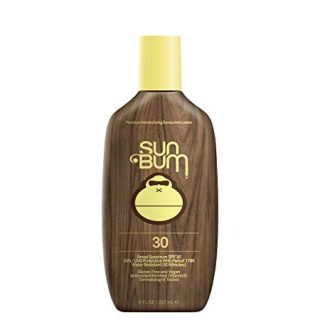
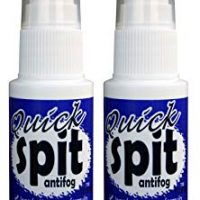
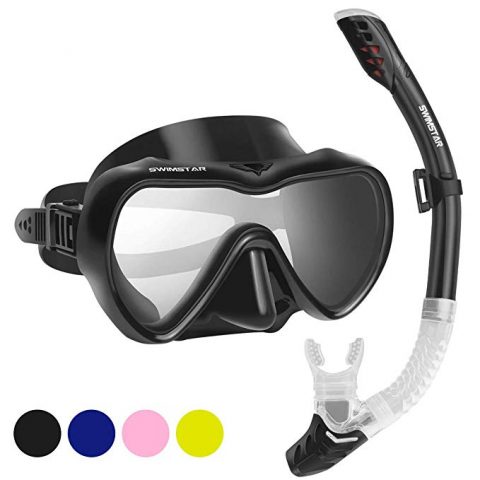
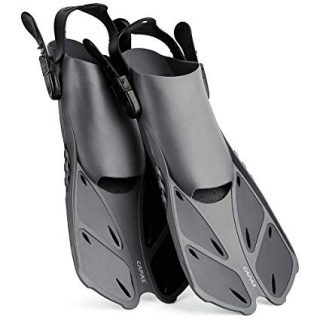


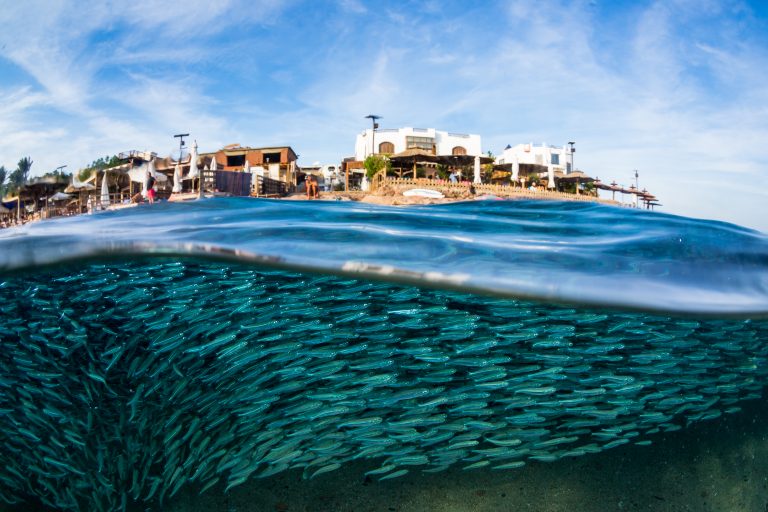

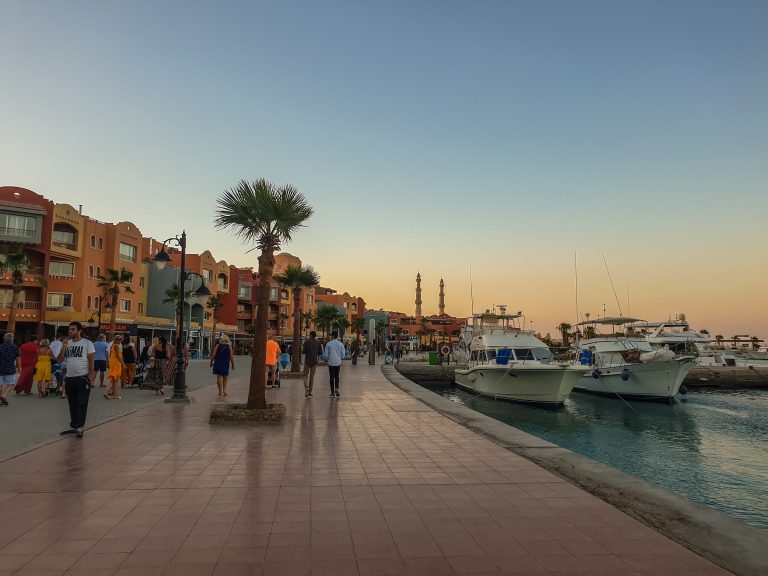

![Best Time to Visit Egypt [A Local's Guide] 25 Best Time to Visit Egypt](https://alittlenomad.com/wp-content/uploads/2019/10/Best-Time-To-Visit-Egypt-768x557.jpg)

What an incredibly informative and engaging guide to snorkeling in Hurghada! Your detailed descriptions of the best spots and the marine life one can expect to encounter are truly captivating. It’s great to know about the semi-emerged reefs and the efforts to protect them. As someone who loves exploring underwater worlds, your insights and tips will definitely help me plan an amazing snorkeling trip. Thank you for sharing your expertise and experiences!
This is remarkably informative, thank you so much. One question, do you know the best places to book a tour to Abu Ramada or Gota Abu Ramada? Any help would be most appreciated.
There are tons of operators to choose from once you get there, it’s generally not necessary to book in advance.